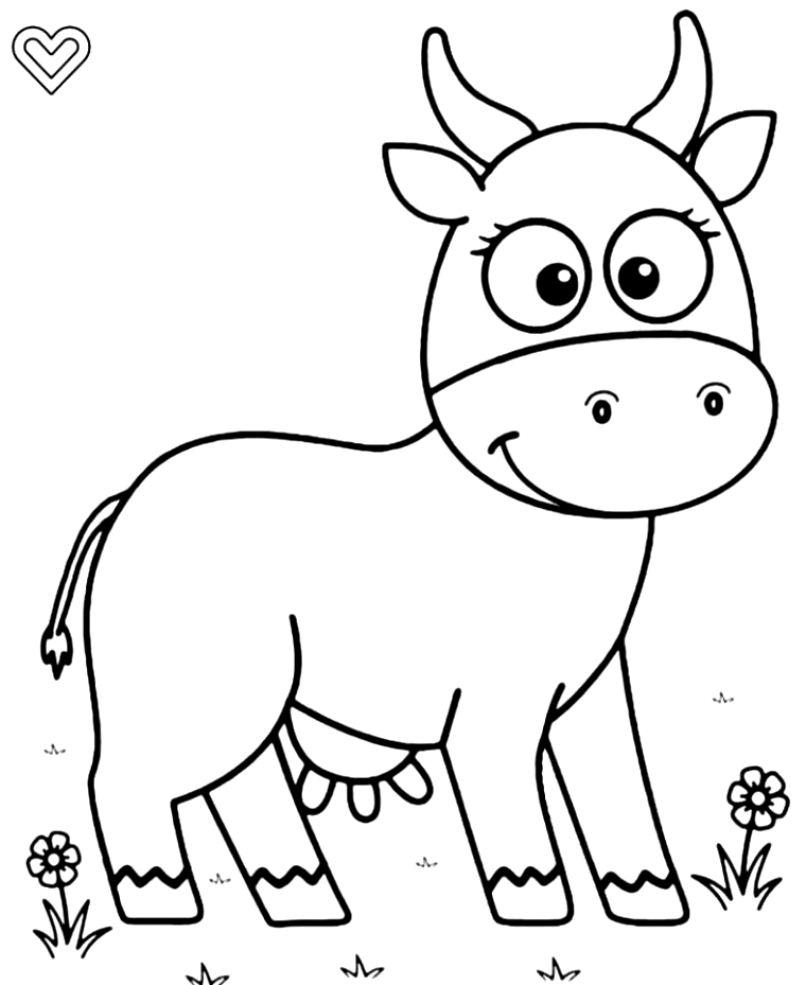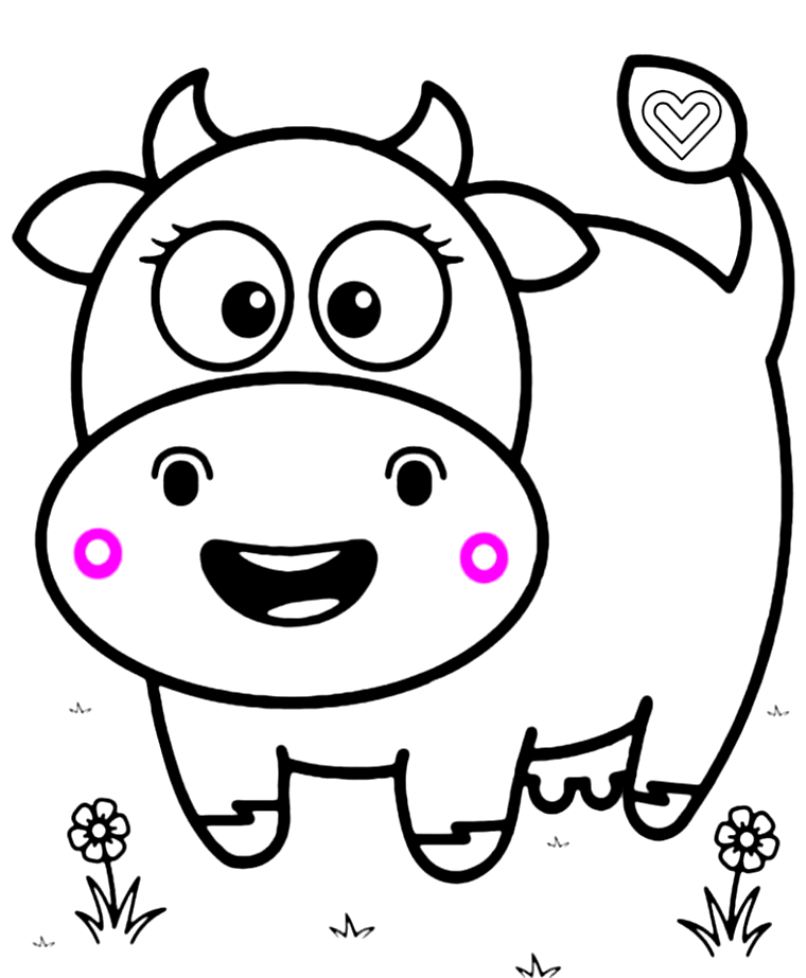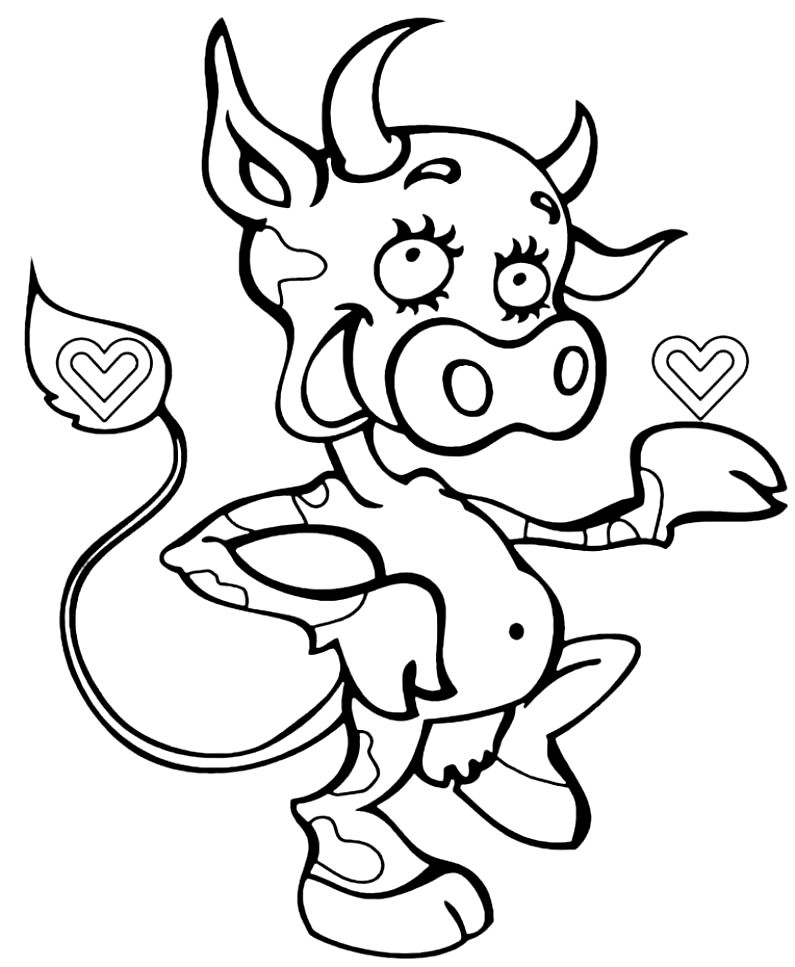Cows
Start the fun with cows coloring pages. The indispensable animal of the farms is the cow; It is a large animal with many uses. We will learn more about these animals with the cow coloring page. Let's prepare our pastel pencils while working with the cow page. Coloring pencils should have colors such as yellow, gray, black, gray.
(Printable Sheets) Cows coloring pages
I hope you enjoyed the cows coloring pages. Now I would like to give more information about cows.. Cows usually become adults at the age of 2 or 2.5 years. The age range of 2.5 - 3 is suitable for them to breed. An adult cow weighs around 500kg and can live up to 25-30 years. A cow is called a calf when it is born, then a heifer and a cow after giving birth. Its men are called ox, bull and bull. Although some features may vary according to races, in general, the structure of all races is almost the same.
Cow and its Characteristics
Cows, which are part of the artiodactyls, are herbivores. This animal therefore feeds mainly on plants. Cows weigh more than half a ton. They are thought to have been domesticated about 10,000 years ago in the Middle East. Cow breeding and use is part of cattle. Mankind uses cows to produce milk (which produces many products), and cows' meat is also consumed. On the other hand, the cow's body is also used to obtain leather. Beef is one of the most important foods in many cultures. Indeed, most of the cow's body is consumed by humans from head to tail. Bos taurus means cow in Latin. In biology, this name is generally used for cows.
Cow Species
When cow species are examined, both dairy cows and wild cows can be mentioned. Montofon, Tudanca, Jersey, Simmental, Pasiega, Normando and Holstein are among the most common cow breeds. When we look at the history of cows, many different cow species can be mentioned. When cow characteristics are evaluated, their feeding and hunting can also be mentioned. It is also possible to see that there are more herbivorous creatures when hunting and feeding in cows are investigated. These creatures, which constantly graze and produce milk, give a high rate of milk to their owners every day. Meat, milk and skin of healthy-fed cows can also be used in a quality way.
Cow Life
Cow life can be extended up to a maximum of 22 years. In order for cows of this age to live longer, climatic and nutritional conditions must be fully met. Cows may become unproductive due to old age after they have lived a healthy life for a certain period of time. If there is no reason such as illness, they die after 22 years.
Interesting Facts About Cows
- It is also possible to talk about interesting information about cows. Below are some interesting information that many people do not know.
- Cows are similar to humans in structure. While they continue their lives in herds, they can also form friendship bonds.
- The weight of a normal cow is about 550 kg.
- An average cow performs more than 20 chewing operations while eating.
- Cows can monitor their surroundings with a 360-degree viewing angle.
- Cows, like humans, have a 9-month pregnancy period.
- Cows can climb stairs due to their leg structure; but unfortunately they can't go back down.
- A healthy cow produces 56 kg of saliva daily.
Milk Production in Cows
Even if they are the same breed, the characteristics of all cows are different from each other. This becomes even more evident in racial changes. After a cow calves, the annual amount of milk is determined according to the milk it gives until weaning. This amount is around 8000 kg in domestic dairy cows. In order to increase the amount of milk taken, mostly Holstein cows are preferred, and around 15000 kg-25000 kg of milk can be taken from these breeds of cows annually. Butchery cows fed for their meat are not milked, they simply suckle their young. The amount of milk taken annually varies according to the age of dairy cows. They are most productive between the ages of 5 and 6 years.
Nutrition of Cows
In general, the way of feeding the cows consists of dense forage mixed with roughage such as straw and grass. Intensive feeds are a mixture of pulp and grain containing special vitamins and minerals. The amount varies according to the characteristics of the cow. The diets and amounts of cows that will calve, give milk or are fed for meat vary.
Breeds of Cows
It is among the most preferred breeds for the local South Anatolian Red meat, especially grown around Çukurova. Jersey and holstein cows are preferred cow breeds as dairy cows. Angus, charlotte, limo, piedmontese and Belgian blue are among the breeds that are fed for their meat. Montofon and simental breeds are fed both for their meat and as milkers.










